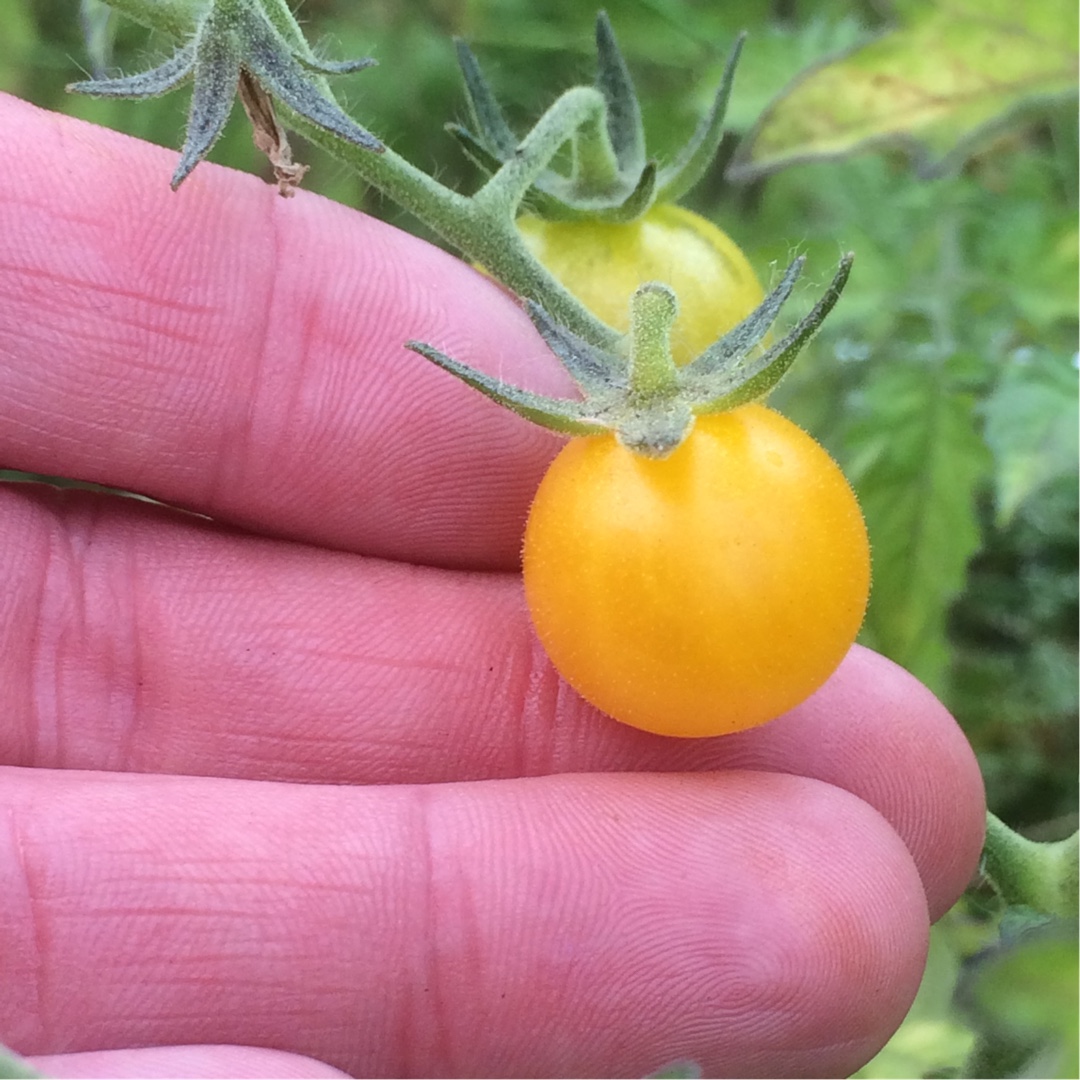
Solanum Pimpernelifolium 'Yellow Currant'
Tomato 'Yellow Currant' (Cherry Tomato)
Tomatoes -which are, scientifically speaking fruit, not vegetable, but their use is as a vegetable, are cultivated as cherry, plum, beefsteak and common round, and there are many different varieties of each type. Best results are achieved for all varieties if grown under glass. They will grow up to 1.8m when supported on a stake, or string. Yellow flowers are held on trusses and produce up to 10 fruits. Side shoots need to be pinched out at leaf joints and careful watering is a must to stop fruit splitting and for flavour. Keep water off the foliage as blight can be a problem. 'Yellow Currant' is a small,yellow, very flavoursome cherry tomato.
Contributed by @tiggrx
-
Full sun
-
Occasional watering
-
Not Frost hardy
-
Rich and free draining
Common name
Tomato 'Yellow Currant' (Cherry Tomato)
Latin name
Solanum Pimpernelifolium 'Yellow Currant'
type
Fruiting Vine
family
Solanaceae
ph
5.0 - 7.0 Acid - Neutral
Plant & bloom calendar
-
Best time to plant
-
When to harvest
full grown dimensions
 0.80 M
1.80 M
0.80 M
1.80 M
Solanum Pimpernelifolium 'Yellow Currant'
Tomatoes -which are, scientifically speaking fruit, not vegetable, but their use is as a vegetable, are cultivated as cherry, plum, beefsteak and common round, and there are many different varieties of each type. Best results are achieved for all varieties if grown under glass. They will grow up to 1.8m when supported on a stake, or string. Yellow flowers are held on trusses and produce up to 10 fruits. Side shoots need to be pinched out at leaf joints and careful watering is a must to stop fruit splitting and for flavour. Keep water off the foliage as blight can be a problem. 'Yellow Currant' is a small,yellow, very flavoursome cherry tomato.
Planting
From Mid Spring TO Early Summer
Plant tomato plants grown from seed into the greenhouse border, when they are big enough to handle, and when risk of frost has passed. For outdoor varieties, young tender plants need to be hardened off, gradually, first in a cold-frame, and then in the open, before planting into their permanent position.
Propagation by seed
From Early Spring TO Mid Spring
Grow from seed in early spring in heat, one seed per tray division, or pot. Fill 9cm (3½in) pot with seed or multipurpose compost.Level and firm the compost, then water. Sow seeds on the compost surface, spacing them evenly, about 1/2" apart, (to help prevent "damping off" disease). Cover the seed with a layer of vermiculite, or sifted soil or compost. Keep at approximately 21°C (70°F), ideally in a heated propagator, When seedlings are big enough to handle, plant out in to a greenhouse - at least 16" apart - or, although less satisfactory, to a sunny windowsill













